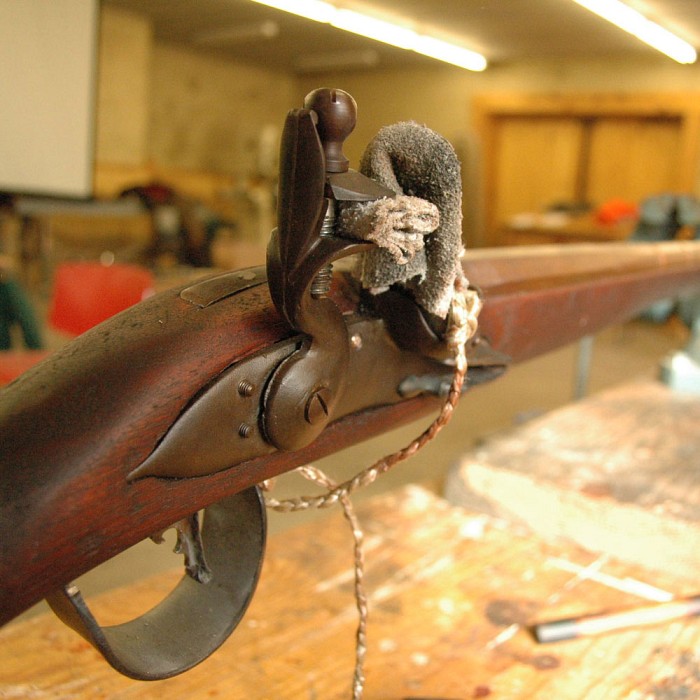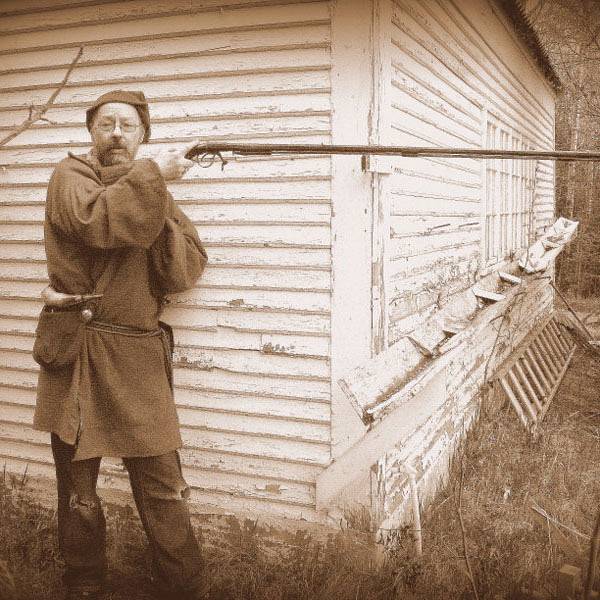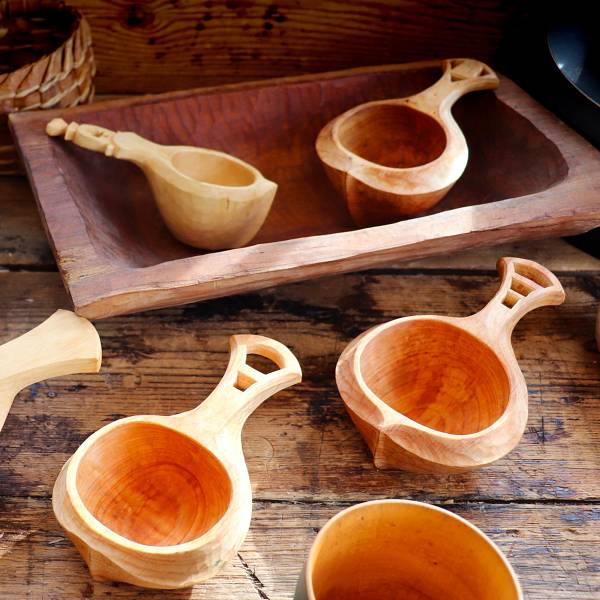
Traditional Crafts
Building the Fur Trade Rifle
Course Overview
Students will learn the history and craft of the flintlock Trade Rifle, a muzzle loading firearm associated with the 19th-century American frontier, including the Great Lakes fur trade. Rugged, accurate yet inexpensive, it fully answered the big game shooting needs of this era and still remains a fine hunting arm. A brief history of the Trade Rifle and the conditions leading to its design will fuel discussion as students undertake this challenging but rewarding project. Hand tools will largely be used in constructing an authentic Trade Rifle from a pre-shaped, semi-inlet maple stock, using essentially the same techniques employed by the early makers. This project is appropriate for first-time gun makers, but past experience in woodworking will be helpful. During the 11-day course, students will begin their project with a pre-shaped stock of seasoned maple (suitable for an authentic flintlock Trade Rifle), a proper flint lock mechanism and heavy, rifled barrel. From there they will complete the inletting of the barrel, lock and other period-correct metal components, some of which they will fashion themselves. Students will be able to choose between a French or English-style trade gun.
Many trade rifles of this style were bulk-purchased by various fur companies from a variety of Eastern gun makers to arm their post employees & to trade to trappers. The U.S. government did the same to meet treaty obligations with the Native Nations. Trade rifle makers included Tryon, Leman, Dickert & Gill, Henry, Gonter, Griskey and many more from about 1800 to 1840. This course will begin with an introduction to the history of this craft, a tool check, and some hands-on demonstration of pertinent techniques by the instructor. Traditional early 19th-century finishing techniques will be employed in completing the gun. Some variations are possible, which may increase the materials fee.
Dates
Course Details
Required
You will need the following tools for this class:
1) Various C-clamps
2) Pencils and eraser *
3) Maul for driving chisels and gouges
4) Flat chisels; 1/8”, ¼”, ½”
5) Whetstones – coarse, medium (600 grit), fine (1800 grit) or extra-fine (2000 grit) *
6) Assorted bastard files
7) Cabinet maker’s rasp – No. 49 or No. 50 or Sur-Forms of various shapes *
8) Assorted mill files, w/ 5” to 6” crossing files being recommended
9) Assorted needle files – coarse to fine, including at least on three-corner file *
10) Three-corner needle file, coarse
11) 1/16” flat chisel or “stabbing tool” made from thee-corner needle file (per instructor’s sketch)
12) Hacksaw frame and 18tpi, 24tpi and 32tpi blades *
13) Jeweler’s saw with supply of No. 4 blades *
14) A moderate sized cold chisel *
15) Pin drifts; 1/16”, 3/32”
16) Small hammer or equivalent
17) Work gloves
18) Safety goggles
*These items will also be brought in limited numbers by the instructor to create a communal tool supply for the class.
Optional Tools
Feel free to bring your favorite tools and whatever materials you might feel appropriate for this course.
Optional: pair of right-hand and left-hand ¼” to ½” skew chisels
draw file or lathe file
File card or wire brush
wood burnishing rod, coke bottle or equivalent
Opti-visor: No. 5 or No. 7 lenses
More Information
Once registered, students will receive a confirmation email with further class information. Please call us if you haven't received it within 24 hours.


